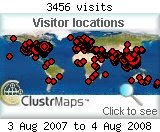Talk about IRONY... =(
It will be almost a year ( October 17, 2006 ) after the first STAND UP event by the UN Millenium Campaign. And these are the news we get to read.... "Poorest Pinoys spending MORE, earning LESS".
Will we ever get there? To that point where better quality of lives for the majority of Filipinos will be achievable? Where getting basic commodities is a "given", the general rule in every Filipino household rather than an exception nowadays. And then we have the CBCP opposing measures on artificial contraception and everything RH-related, saying it has nothing to do with "us" being poor and that overpopulation is not a problem. This is a no-brainer really - MORE MOUTHS TO FEED means LESS FOOD EACH MOUTH RECEIVES.
So here's a question I have yet to hear an answer from them - What alternative measures or bright ideas do they suggest in order to alleviate the poverty situation in the country?? Instead of giving people who do something about our problems a lecture/sermon on Catholicism, why not channel their energy into doing something concrete that would actually make a difference in the lives of Filipinos. Thus, more Catholics would perhaps remain "faithful" and actually "practice" their religion.
"Heaven never helps the man who does not act. "
---------------------------------------
By Cai U. Ordinario
Reporter / Business Mirror / October 10
HIGHER prices have taken their toll on the poor. The poorest families are now spending more and earning less, according to the latest preliminary results of the 2006 Family Income and Expenditure Survey (FIES) released by the National Statistics Office (NSO) Tuesday.
The FIES showed that poor families, or those belonging to the bottom 30-percent income group, spent P153,000 last year but only earned P148,000.
While these figures are higher than the P125,000-worth income and P128,000-worth expenditures in 2003, the difference is higher in 2006 at P5,000 a year than in 2003’s P3,000 a year.
The NSO said for every P100 spent by these economic sectors in 2006, P59 went to food, compared with only P48 in 2003. Consequently, there was a decrease in the share of other expenditure items like rent, which dropped to 9 percent from 12.7 percent.
Macroeconomically, the upper 70 percent earned P2.73 trillion and spent P2.3 trillion for a savings of P437 billion in 2006 compared with the
bottom 30 percent that earned P258 billion and spent P267 billion, or a deficit of P9 billion.
The Gini coefficient measured in the FIES was estimated at 0.4564 in 2006, slightly lower than the 2003 ratio of 0.4605 .
The Gini coefficient provides a measure of income inequality within a population and ranges from 0 to 1, with 0 indicating perfect income equality among families, and 1 indicating absolute income inequality.
The good news, if good news it is, is that, “the share to the total income of families belonging to the 10th decile exhibited a slight decrease, from 36.3 percent in 2003 to 35.9 percent in 2006. The gap in family income between the families belonging to the 10th decile and those in the first decile had narrowed slightly.”
The FIES is a nationwide survey of households undertaken every three years by the NSO. It is the main source of data on family income and expenditure, which include among others, levels of consumption by item of expenditure as well as sources of income in cash and in kind.
The number of households, or families, for the 2006 FIES was estimated using the 2000 Census of Population and Housing (CPH)-based population projections and information from the 2000 CPH on the average household size by province.













0 comments:
Post a Comment